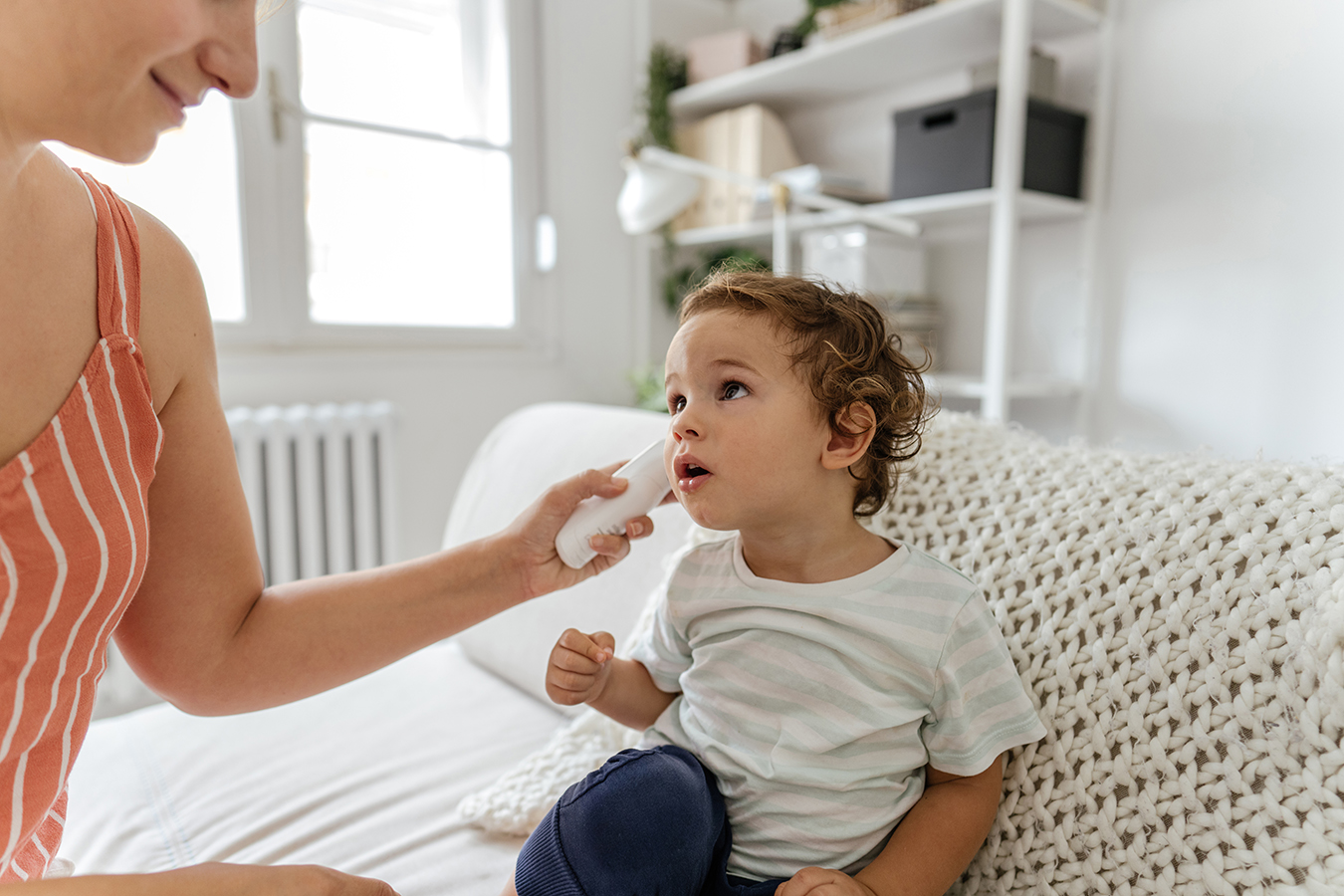What’s Best for Your Child’s Ear Infection?

Parents often worry about young children’s recurring ear infections. As alarming as this condition can be, “up to 90% of children have at least one ear infection by the age of three,” says Ramzi Younis, M.D., a pediatric ear, nose, and throat specialist with the University of Miami Health System. After the common cold, middle ear inflammation (or acute otitis media) is the most frequently diagnosed pediatric illness. This middle ear infection is more bothersome and painful than dangerous, though it will probably require a prescription or medical treatment to clear it up.
Why do some children get ear infections so frequently?
Middle ear infections tend to come back repeatedly, often following an upper respiratory infection, as young kids’ immune systems are still developing. The draining pipe of the ear (called the eustachian tube) is ineffective in young children and typically becomes fully functional by age 7. That’s why these infections occur less frequently in older children.
Whether your child is experiencing their first or fourth ear infection, you are probably focused on reducing their discomfort.
What are the symptoms of an ear infection?
Symptoms can include:
- earache
- fluid draining from the ear
- a fever above 100°F
- headache
- loss of balance
Feeling like this may cause your child to tug on their ear, cry more than usual, act restless, and have trouble sleeping and eating. Tell your pediatrician if your child isn’t responding normally to speech or sound. The buildup of pus/fluid in the ear can temporarily reduce their hearing.
“The first line of defense is always antibiotic treatment administered in the ear or by mouth,” Dr. Younis says.
Your pediatrician can prescribe antibiotics and refer you to a pediatric otolaryngologist for ear tube placement. The surgical insertion of temporary ear tubes (called tympanostomy tubes) in your child’s ear(s) can help drain fluid, reduce the painful symptoms of infection, and possibly avoid frequent reinfection.
“According to the guidelines, any child with three episodes of acute otitis media within six months or four episodes within one year is a candidate for ear tubes,” says Dr. Younis.
Does my child need ear tubes?
Antibiotics should control the infection. But the fluid built up behind the eardrum may take three weeks to three months to drain or dry up.
“If that does not eventually clear up, the condition advances to an illness called otitis media with effusion, and then the child might need ear tubes,” says Dr. Younis. “We don’t put in tubes unless there’s still fluid in the ear following antibiotic treatment.”
Ear tubes help drain fluid from the space behind the eardrum, which is a natural process. They can also improve the application of antibiotic ear drops if needed for a future infection.
Fluid or pus buildup behind the eardrum can interfere with or muffle a child’s hearing. When young children cannot hear people talking and the sounds of the world around them, they can miss important information for speech and mental development.
“This loss is too much of a compromise,” Dr. Younis says. “That leads us to favor tubes to ventilate the ears, improve the child’s quality of life, and potentially reduce the frequency of ear infections.”
Tympanostomy tube placement surgery is the most frequently performed operation in children following the newborn stage.
“Having been in practice for 25 years,” he says, “I have never seen a major complication from ear tubes. It is a safe and time-tested treatment that can be highly successful in the right cases.”
Questions to ask your pediatrician about ear infections
- If the antibiotics do not work, what will that look like? And what will we do next?
- Will ear tubes help speed up my child’s recovery compared to antibiotics?
- What is the best treatment option to protect my child’s ears while supporting their hearing and speech development?
- What is the safest and most effective option to improve my child’s quality of life?
“We need to individualize medical care and treatment,” says Dr. Younis. The best course of treatment depends on your child’s age, infection history, and any related conditions. “I’m focusing on their quality of life and the impact on their development.”
Dana Kantrowitz is a contributing writer for UMiami Health News.
Tags: audiology in Miami, Dr. Ramzi Younis, ear infection, ear tube
